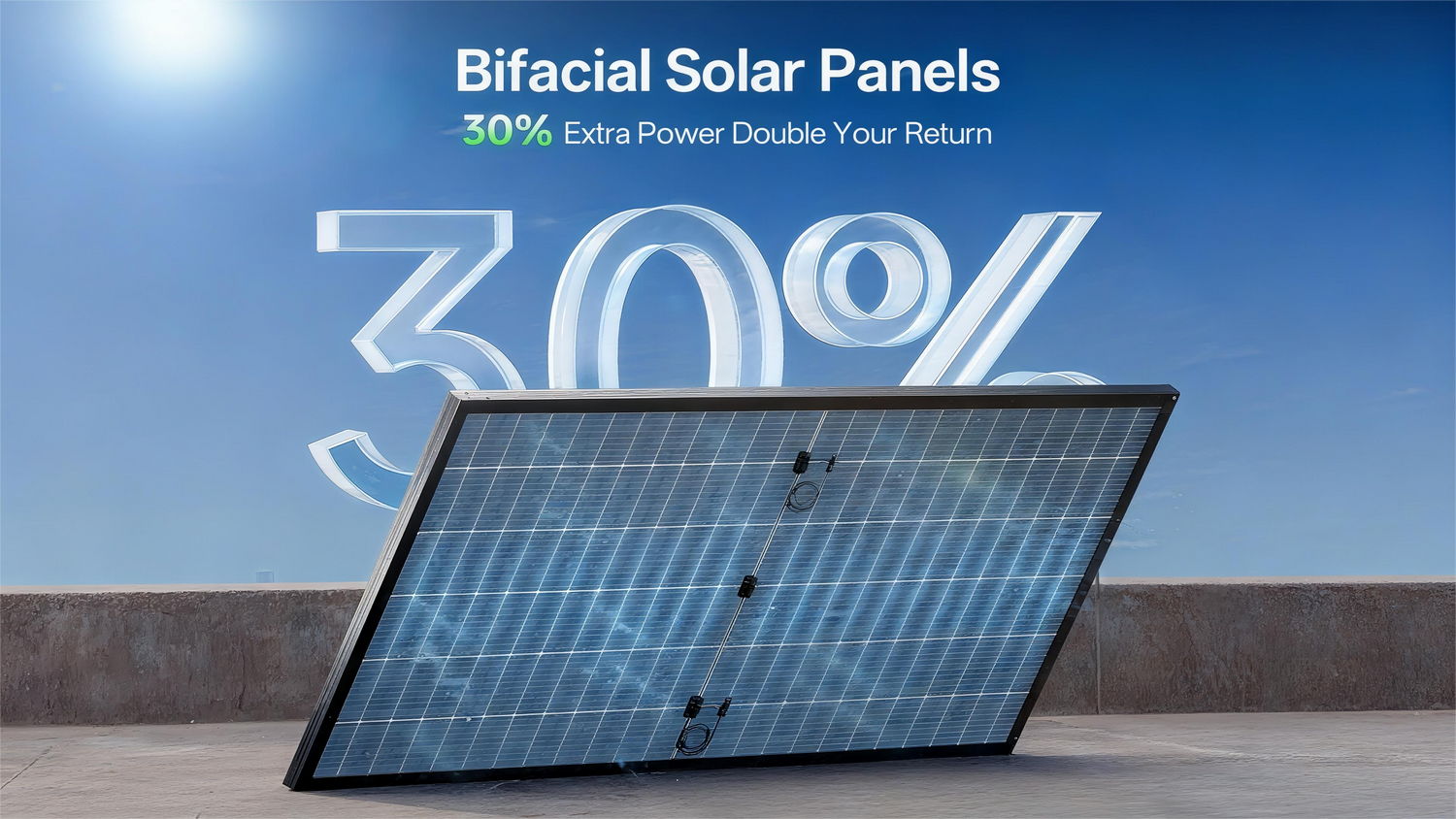Regular cleaning is one of the simplest and most effective ways to ensure your solar investment operates at peak performance. Dust, pollen, bird droppings, and other debris can significantly block sunlight from reaching the cells, reducing your system's output and your energy savings.
This guide will walk you through the safe, correct, and efficient way to clean your rooftop solar panels without causing damage.
Safety First: Your #1 Priority
Before you think about cleaning, read these safety rules. They are non-negotiable.
- Work from the Ground if Possible: Use a hose with a spray attachment or a soft brush with an extension pole. Avoid climbing onto the roof whenever you can.
- Never Walk on Panels: Solar panels are durable but can crack under concentrated pressure (like a foot or knee). This voids the warranty and destroys the panel.
- Mind the Electricity: Although unlikely, damaged wiring could pose a risk. It's safest to temporarily shut down your system by turning off the DC disconnect switch (usually located near the inverter) before cleaning. Always follow your system manufacturer's shutdown procedure.
- Mind Your Footing: If you *must* go on the roof, wear secure, non-slip footwear and use a safety harness. Be extremely aware of the edge of the roof and any slippery surfaces.
- Check Your Warranty: Some manufacturers have specific cleaning instructions or may require a certified professional to maintain the warranty. Always check your panel's manual first.

When to Clean Your Solar Panels
- As Needed: There's no fixed schedule. The need depends on your local environment (dusty, high-pollen, near trees, frequent bird activity).
- Seasonally: A good rule of thumb is to check them seasonally. A cleaning in late spring (after pollen season) and in the fall (after trees shed their leaves) is often sufficient for most homeowners.
- After Events: Clean after major storms that leave debris, or if you notice a significant, sustained drop in your system's energy output that correlates with dirty panels (check your monitoring app).
- Pro Tip: Light dust is often washed away by rain. You mainly need to worry about caked-on grime like bird droppings, splattered sap, and thick pollen, which rainwater can't shift.
What You'll Need: The Right Tools for the Job
Using the wrong tools can permanently scratch the anti-reflective glass coating on your panels.
- Water: Plain water from a garden hose is your first and best tool. Often, it's all you need.
- Soft Brush or Squeegee: Use a soft, non-abrasive brush (like one designed for car windows) with a long extension pole. A plastic-bladed squeegee on a pole is also excellent.
- Alcohol (If Needed): If water isn't enough, use Alcohol to clean it. *Avoid harsh detergents, abrasive cleaners, or anything with ammonia or bleach, as they can degrade sealing materials and frames.
WHAT TO AVOID AT ALL COSTS:
- Pressure Washers: The high pressure can force water past the panel's seals, damaging the internal components and voiding the warranty. It can also cause micro-scratches.
- Abrasive Materials: Steel wool, hard-bristled brushes, or rough sponges will scratch the glass, creating a permanent haze that reduces efficiency.
- Cold Water on Hot Panels: Spraying cold water on extremely hot panels can cause thermal shock and crack the glass.

The Step-by-Step Cleaning Process
Best Time to Clean: Early in the morning, in the evening, or on a cool, overcast day. Cleaning panels in direct, hot sun causes the water to dry too quickly, leaving streaks and residue.
- Shut Down the System: (Recommended) Locate your DC disconnect switch and turn it to the "OFF" position. Consult your manual if you are unsure.
- Rinse First: Use the garden hose with a spray nozzle to thoroughly rinse the panels. This removes loose surface dirt and debris without you having to scrub it and potentially cause scratches.
- Clean with Alcohol (If Needed): If rinsing isn't enough, use your soft brush or a sponge to gently apply the alcohol to the glass. Focus on soiled areas like bird droppings.
- Rinse Thoroughly: Immediately and completely rinse off all water with the hose.
- Dry (Optional): If you have a squeegee or a very soft towel, you can gently dry the panels to prevent water spots, especially if you have hard water. This is often not necessary, as the sun will dry them quickly.
- Turn the System Back On: Once you are finished and off the roof, remember to turn your DC disconnect switch back to the "ON" position.
When to Call a Professional
Consider hiring a professional solar cleaning service if:
* Your roof is steep, high, or otherwise dangerous to access.
* You are not comfortable working on a ladder or roof.
* The buildup is severe and doesn't come off with gentle cleaning.
* You simply don't have the time or desire to do it yourself.
Conclusion: A Little Care Goes a Long Way
Keeping your solar panels clean is basic maintenance, like washing your car. It ensures you get every bit of power you're paying for and protects your long-term investment. By following these simple, safe steps, you can maintain maximum efficiency and extend the life of your solar array.




